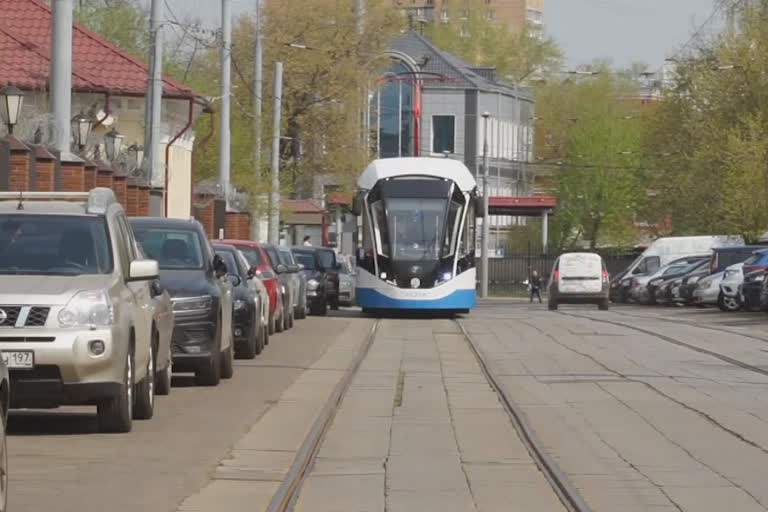Moscow: Taking a major step for transportation, Russia is testing autonomous trams in Moscow. That moves along the tracks without a driver, constantly analyzing its surroundings.
The first phase of testing is near completion, in which the tram stops as obstacles suddenly appear.
This uses a camera and computer vision - a low-level AI system that helps the computer to see - the autonomous tram can react to situations on the road.
It's quickly able to spot a pedestrian crossing the road, coming to a halt to avoid a collision.
Since October 2018, the system has been going through a series of tests in the north of Moscow, gathering vital information.
During the tests, it performs the basic functions as stopping the vehicle and controlling its speed.
These first levels are called the driver's assistant, they help the driver to drive the vehicle and they add an extra level of control over the operation of the vehicle.
The basic functions include braking before an obstacle, braking before road lights and braking before a railroad switch.
The autonomous tram is the brainchild of Russian company Cognitive Technologies.
Cognitive Technologies is currently testing the system of deceleration in the situation of collision and a system of speed limiting.
Head of Autopilot Development Team, Yuri Minkin said, "The task of these tests is to demonstrate and test how the car decelerates in known conditions before an obstacle, such as a human."
The goal of these tests is to debug the mechanisms and to make sure that the system performs these basic functions without mistakes.
Minkin added, "We detect a human, we analyze its trajectory, we understand that it is crossing in front of the tram. We began to signal to them using the lights and the sound. And since, in this case, a person has not changed their trajectory, we began decelerating. We were decelerating safely, so we do not run over a person, and so that the people inside the car do not feel any significant discomfort."
The system is programmed to be able to react to changes in the weather, such as rainfall or snow.
The bright sun may cause a problem, as it blinds the camera similar to when it blinds a person.
The system is being developed to work accurately in every condition as in heavy rain when wipers work on maximum speed and do not clean the windshield and in heavy snowstorms that cover windshields.
The system's 10 -20 video cameras and 10 radars are connected to a neural network which is trained with datasets - pre-gathered pieces of video with different road situations.

The system's AI-based computer vision system allows the autonomous tram to fill in missing pieces of information by interpreting the data coming from cameras and radars, to understand what is happening on the road, adverse weather conditions, etc.
An Associate Professor at the Higher School of Economics, Anton Konushin said, "Yandex developers have examples not usual for their system, for example, when a road is being crossed by rabbits and others. Of course in the system before tests, there were no rabbits or boars. Because in places in Moscow where the transport is being tested there are no such animals."
Yandex is the country's leading search engine, which now develops an autonomous driving system in Russia.
The more unique datasets the company collects, the better the neural network will be at overcoming bad weather conditions.
The company has developed a 4D imagining radar to use in the tram to reinforce the detection of objects in bad weather conditions.
In April 1899, Moscow's first tramway line was launched, and by the 1940s, the rapid construction of lines had brought more than 500 kilometers of tram lines.
Now there are 417 kilometers of lines left, and Moscow tram is still one of the key transports for the city.
The local government keeps updating the tramway fleet and reconstruct the lines.
But as for the future of Russia's trams, it is yet to be determined whether autonomous trams will be the next step or not.
Read also: China wants a Democrat to win 2020 election for trade deal: Trum
p



